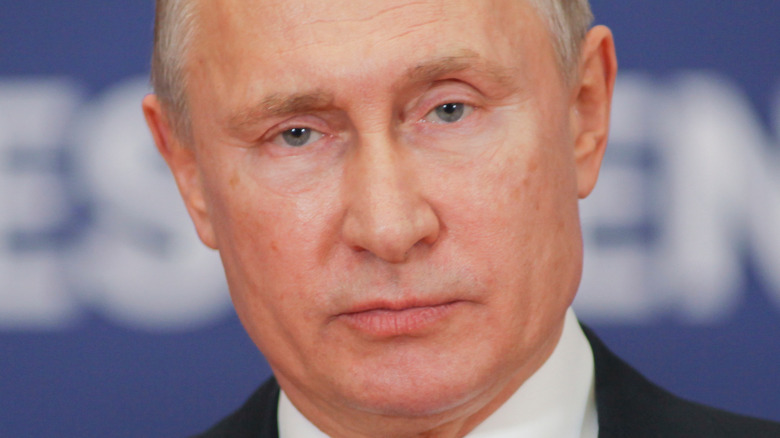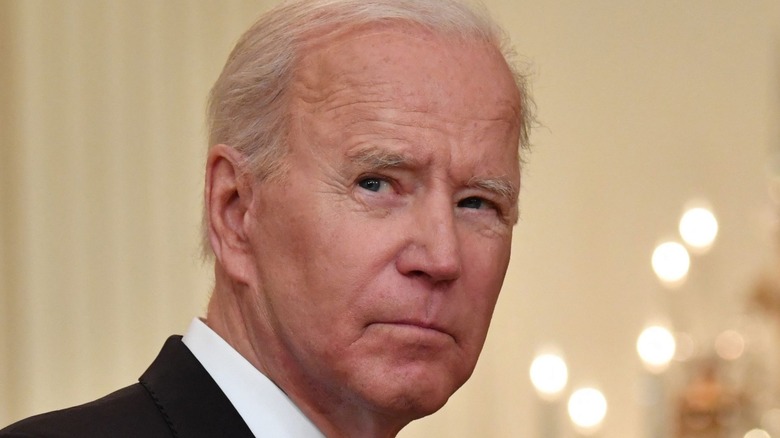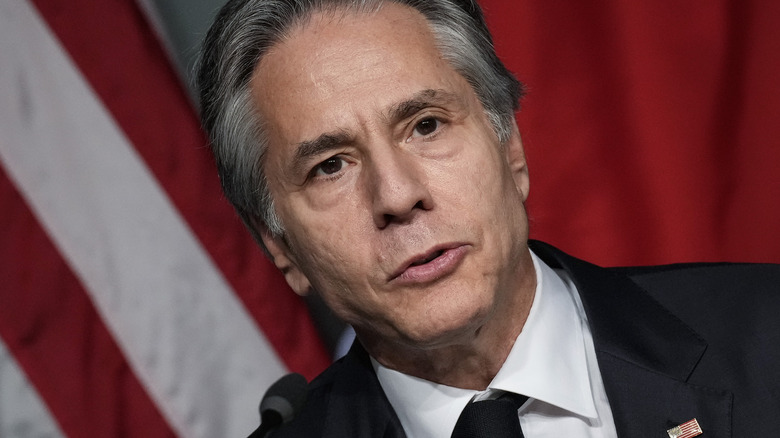The US And Russia's New START Treaty Is In Serious Jeopardy — Here's Why That Matters
As the Russian-Ukraine conflict entered its second year, Russian President Vladimir Putin announced Moscow would step back from the New START nuclear arms reduction treaty with the United States. That announcement came in Putin's state of the nation address to the Russian National Assembly, and it was conspicuously timed around President Biden's February 2023 surprise visit to Kyiv, Ukraine, where Biden pledged continued U.S. support for Ukraine in the ongoing hostilities.
The New START — or "strategic arms reduction treaty" — is a 2010 agreement between Russia, led at that time by Dmitry Medvedev, and the United States, under the Obama administration, per Reuters. At the time of Putin's 2023 announcement, New START was the last international agreement on nuclear arms reduction, and the Kremlin's decision to disregard the accord left some observers on edge, as it had long been feared the Russian invasion of Ukraine could escalate with a nuclear strike (via the Council on Foreign Relations).
New START caps both nations' nuclear arsenals
As the Arms Control Association (ACA) explains, efforts to reduce the Russian and American nuclear arsenal began during the Reagan administration, and there have been a few important agreements between the two countries since then, New START is the most recent. New START went into effect in 2011, and The White House and the Kremlin had only just agreed in 2021 to extend the treaty another five years, setting it to expire in 2026. The treaty not only capped nuclear arsenals for both countries, but it also allowed officials from each country to independently verify the other remained in compliance.
Chiefly, the New START treaty targeted intercontinental-range nuclear weapons, and though nuclear armament inspections had paused for both the U.S. and Russia on account of the COVID-19 pandemic, Russia had reportedly not been in compliance with the agreement for quite some time prior to Putin's declaration. Under New START, Russia and the U.S. agreed to 1,550 strategic nuclear warheads at maximum, 700 long-range missiles and bombers, and 800 non-deployed and deployed Intercontinental ballistic missiles launchers and submarine-launched ballistic missile launchers and bombers.
Through the accord, each side was allowed 18 visits to strategic nuclear arms sites each year, though that was paused during the height of the COVID-19 pandemic. As the pandemic subsided, talks were planned to resume those inspections in Egypt, but Russia delayed the meeting, according to the Associated Press.
The Kremlin's decision is reversible
Following Putin's address in which the New START announcement was made, Russia's Foreign Ministry stressed the decision is reversible and noted that caps on certain nuclear armaments under the agreement would remain in place. For the Kremlin to reconsider, Russia called on the U.S. to make a good-faith effort to in their view de-escalate the situation in Ukraine via U.S. support of Ukraine's forces in the form of both money and weaponry. In total, the U.S. and Russia account for 90% of all nuclear armaments internationally according to the Bulletin of the Atomic Scientists.
Intimations that Russia could use nuclear weapons in Ukraine have come both from former Russian President Dmitry Medvedev — now deputy head of the Russian Security Council — and from Putin himself, though U.S. officials have seen no evidence Russia has prepared to do so. Via the Associated Press (AP), U.S. Secretary of State Anthony Blinken called Russia's decision regarding New START, "deeply unfortunate and irresponsible." Blinken added, "We'll, of course, make sure that in any event we are postured appropriately for the security of our own country and that of our allies." As the AP elsewhere writes, U.S. President Biden called Putin's choice, "a "big mistake."


